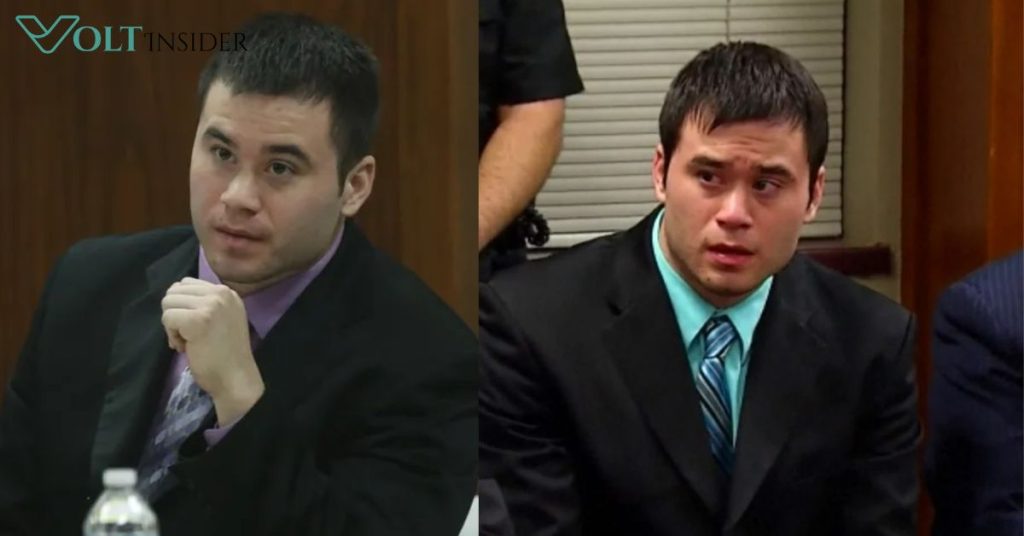The Rise and Role of Daniel Holtzclaw
Daniel Holtzclaw, a former Oklahoma City police officer, was once considered a rising star in law enforcement. Born in 1986, Holtzclaw played college football at Eastern Michigan University before turning to a career in policing. He joined the Oklahoma City Police Department (OCPD) in 2011 and served as a patrol officer on the northeast side of the city, an area known for high crime and low-income residents.
Holtzclaw was recognized for his athleticism and his proactive approach to crime, making numerous arrests during his short career. Colleagues described him as ambitious and physically imposing—traits that, according to some legal experts, later played a role in how he allegedly targeted vulnerable victims. The officer patrolled predominantly African American neighborhoods, which later became central to the racial dynamics surrounding his case.
Allegations and Investigation Unfold
The case against Daniel Holtzclaw began in June 2014, when a 57-year-old woman reported to the Oklahoma City Police Department that a police officer had forced her to perform oral sex during a traffic stop. Her detailed account initiated an internal investigation that would soon unravel a disturbing pattern. Investigators began examining Holtzclaw’s patrol activity logs, GPS data, and cross-referencing this information with complaints from women in the area.
As detectives delved deeper, they uncovered a series of similar complaints. Women—mostly African American, with prior criminal records or socio-economic vulnerabilities—claimed that Holtzclaw had sexually assaulted them during late-night stops. The alleged pattern involved Holtzclaw pulling over women, isolating them, and then using the threat of arrest to coerce them into sexual acts. His victims’ marginalized status made them initially hesitant to report the assaults, fearing they would not be believed.
The Trial and Controversial Conviction
The trial of Daniel Holtzclaw began in November 2015 and ended on December 10 of the same year. Facing 36 charges—including rape, sexual battery, forcible oral sodomy, indecent exposure, and stalking—Holtzclaw pleaded not guilty. Despite his defense calling only one witness, the prosecution built a strong case based on the testimony of 13 African American women who accused him of using his badge and authority to commit sexual crimes during traffic stops in low-income neighborhoods.
A crucial piece of evidence was DNA found on the zipper area of Holtzclaw’s uniform pants, which forensic analysts said matched a 17-year-old victim. His defense challenged this link, calling it a probable example of “secondary transfer”—skin cells unintentionally transferred during a search involving hand-to-object contact.
After four days of deliberation, the jury returned guilty verdicts on 18 of the 36 counts, including four counts of first-degree rape. They recommended a combined prison term totaling 263 years. Justice was facetiously delivered on Holtzclaw’s birthday, December 10, 2015, underscoring the almost surreal nature of the verdict.
Controversy and Implications
The case generated heated debates. Experts and advocates lauded the conviction as “a major victory” for victims of police misconduct, especially Black women historically ignored by the system. The all-white jury’s unanimous decision to convict, despite the defense’s attempts to impeach the credibility of marginalized accusers, was widely interpreted as a positive sign of systemic change.
Conversely, critics raised valid concerns about alleged prosecutorial misrepresentation of DNA evidence and the trial’s structural flaws. Key issues included the joinder of all 13 cases into a single trial—raising the risk of a cumulative credibility effect—and the surrounding publicity, termed a “circus atmosphere,” which may have prejudiced jurors. Holtzclaw’s lawyers argued that scientific inaccuracies, especially in forensic testimony, were egregiously mishandled.
Ongoing Appeals and Legal Debates
Appeals in State and Federal Courts
After his December 2015 conviction and 263‑year sentence, Daniel Holtzclaw pursued a series of appeals challenging both procedural and evidentiary aspects of the case. On August 1, 2019, the Oklahoma Court of Criminal Appeals unanimously upheld his conviction, dismissing claims of “improper joinder” (the bundling of multiple cases into one trial), ineffective counsel, and alleged DNA evidence mishandling. The court’s ruling emphasized that acquittals in half the charges mitigated concerns over trial “prejudice”.
Following this denial, Holtzclaw petitioned the U.S. Supreme Court in December 2019, arguing that the trial’s structure unfairly swayed the jury and that prosecutors misrepresented forensic DNA findings. However, in March 2020, the Court refused to hear his case, letting the lower court’s decision stand.
Contested DNA Evidence and Secret Hearings
At the heart of Holtzclaw’s appeal was the contentious forensic evidence: DNA from a 17-year-old victim was found in the fly of his uniform pants. The prosecution asserted this demonstrated sexual contact, while the defense maintained it was a case of “secondary transfer” — DNA passed through routine handling, not assault. Holtzclaw’s attorneys also highlighted a secret two-day hearing in 2017—held without defense counsel—related to the forensic analyst’s personnel records. Observers criticized the removed transparency and potential violations of due‑process rights.
Holtzclaw’s supporters, including internationally renowned forensic experts, contended the DNA analysis was deeply flawed and misleading to the jury, calling for a retrial. Despite these concerns, both the Oklahoma state and federal appeals courts ultimately concluded the evidence was sufficient and the trial procedurally sound.
Civil Lawsuits and Family’s Fight
Besides criminal appeals, Holtzclaw faces federal civil lawsuits filed by several accusers seeking damages for assault, wrongful arrest, and emotional trauma. As of early 2020, these suits—naming both him and the City of Oklahoma City—are ongoing, with motions to dismiss filed by all parties. Holtzclaw’s legal team continues to challenge both criminal and civil proceedings aggressively .
Holtzclaw’s family, especially his sister Jenny, remains vocal. Following the Supreme Court rejection in 2020, Jenny stated the denial “does not necessarily mean the panel agrees with the … scientifically-illiterate decision,” and insisted they would persevere with post-conviction relief petitions in federal court. She also noted exoneration efforts commonly take over 14 years, underscoring the ongoing nature of their fight.
Public Reaction and Media Impact
The Daniel Holtzclaw case sparked widespread debate over policing, race, and media coverage. While some saw the conviction as a turning point in holding law enforcement accountable, many criticized mainstream outlets for their lack of attention—especially given the gravity of a police officer raping 13 Black women. Cosmopolitan bluntly observed, “The invisibility of the Holtzclaw trial in mainstream media outlets was both blaring and disconcerting”—arguing that the largely ignored story silenced Black women victims of police violence.
Beyond mainstream silence, academic voices connected Holtzclaw’s crimes to broader systemic issues. A Springer Public Health article highlighted how law enforcement abuses exploit “power imbalances and systemic racial and economic biases,” enabling officers like Holtzclaw to target marginalized victims with impunity.
Activism and Community Response
Local activists and advocacy groups rallied around the victims’ voices. Organizations like OKC Artists for Justice emerged to support survivors and push for transparency when bail was reduced from $5 million to $500,000—an act they called “insulting and infuriating”. These groups played a key role in ensuring the case remained visible, framing it as part of a larger fight against police brutality and sexual violence, with women’s safety front and center.
Media Self-Scrutiny and Narrative Framing
The role of the media extended beyond apathy to moments of active reflection and regret. For instance, SB Nation published a sympathetic long-form piece titled “Who Is Daniel Holtzclaw?”, only to swiftly retract it amid criticism that it minimized the severity of his crimes. As Jay Rosen of PressThink described, that editorial decision “amounts to an editorial mystery”.
This incident highlighted the tension in storytelling: questioning how narratives about powerful men—especially those in authority—can skew public perception when not carefully handled.
Source: Uncufftheinnocent / Essence
Significance in Broader Social Justice Movements
Voices across platforms highlighted the Holtzclaw trial as a watershed moment. Teen Vogue referred to his sentencing as a rare milestone, remarking that “It could be a turning point in how we think about rapists and their victims,” especially regarding white police officers abusing Black women. Time Magazine echoed this stance, labeling the conviction a “major victory” that might signal broader systemic accountability.
In broader media, outlets like Vox and The Washington Post noted both the racial dynamics of the crime and the significance of the all-white jury’s decision to convict—an unexpected outcome in light of prevailing research on jury demographics.
Public reaction to the Holtzclaw case was complex and multifaceted:
| Reaction Type | Description |
|---|---|
| Critique of media silence | Outlets largely overlooked a case involving a police officer weaponizing authority to abuse 13 Black women |
| Activist mobilization | Local groups raised awareness and supported survivors, pressing for accountability . |
| Media self-reflection | Coverage missteps like SB Nation’s sympathetic profile prompted industry introspection . |
| Symbolic convictions | Praised as a rare instance of justice serving the most vulnerable communities . |
Conclusion
The saga of Daniel Holtzclaw is a multifaceted legal chronicle that intertwines police authority, racial dynamics, forensic scrutiny, and the long arc of justice. From his early career as a rising Oklahoma City officer to the explosive accusations by 13 African American women, the narrative highlighted systemic vulnerabilities faced by marginalized populations during police encounters. His conviction on 18 of 36 charges, including first‑degree rape, was grounded in survivor testimonies and DNA evidence—though contested by defense claims of secondary transfer.
Through the post‑conviction journey—appeals dismissed by both state and federal courts—Holtzclaw’s team continues to challenge the reliability of forensic conclusions and the fairness of his trial . The case ignited national conversations: the scarcity of mainstream coverage, the symbolic resonance of an all‑white jury convicting a white officer, and the persistent pushes by advocates to reform policing and forensic accountability.
FAQs
- Who is Daniel Holtzclaw?
- Daniel Ken Holtzclaw (b. December 10, 1986) is a former Oklahoma City police officer who was convicted in December 2015 of multiple counts of rape, sexual battery, forcible sodomy, and other sex crimes committed between 2013 and 2014 against Black women while on duty.
- What was the outcome of his trial?
- Holtzclaw was found guilty on 18 out of 36 charges and sentenced in January 2016 to a total of 263 years in prison, effectively a life sentence.
- Are his convictions being appealed?
- Yes. The Oklahoma Court of Criminal Appeals upheld the convictions in August 2019, and his petition to the U.S. Supreme Court was denied in March 2020. He continues to pursue both civil suits and habeas relief in federal courts
- Why is the case significant?
- The case is a landmark example of police accountability, highlighting racial and societal biases in alleged sexual abuse. It spurred debates over media coverage, forensic evidence handling, jury composition, and broader reforms in policing practices.






